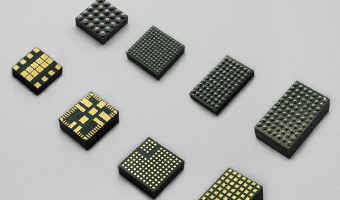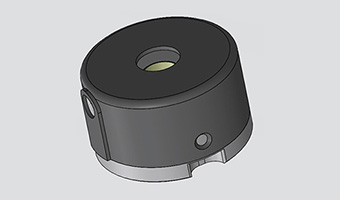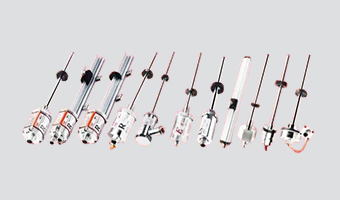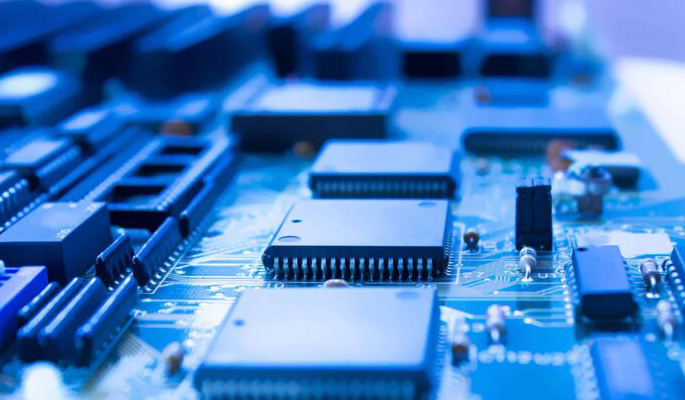Integrated Power Module: Revolutionizing Power Electronics Design
Apr 27,2025
By:Epoch
As the demand for compact, efficient, and reliable power solutions grows across industries, the integrated power module (IPM) has emerged as a transformative technology in modern electronics. This article explores what an integrated power module is, its advantages, key applications, and how it is shaping the future of power management.
What Is an Integrated Power Module?
An integrated power module is a highly compact electronic component that consolidates multiple power management functions-such as power switches (MOSFETs, IGBTs), drivers, control circuitry, and protection features-into a single package. IPMs are available in various forms, including DC-DC modules, motor control modules, and isolated power supplies, and are designed to simplify power system design, reduce board space, and enhance system reliability.
Key Advantages of Integrated Power Modules
· Space and Design Efficiency
By integrating the power stage, control loop, and passive components (like inductors and capacitors), IPMs drastically reduce the footprint of power systems. This is especially valuable in space-constrained applications such as mobile devices, industrial automation, and automotive electronics.
· Simplified System Integration
IPMs minimize the need for external components and complex PCB layouts. Many modules require only minimal external capacitors or resistors, enabling faster prototyping and easier system integration.
· Enhanced Reliability
With fewer interconnections and optimized thermal management, IPMs reduce the risk of failure due to loose connections or thermal stress. Advanced protection features-such as overcurrent, overvoltage, and thermal shutdown-are typically built-in, further improving system robustness.
· Superior Electrical Performance
The close integration of components minimizes parasitic inductance and capacitance, resulting in improved efficiency, faster transient response, and lower electromagnetic interference (EMI). Some modules use shielded ceramic substrates to further suppress EMI noise.
· Flexible Power Scaling
IPMs are available in a wide range of current and voltage ratings, from sub-ampere modules for portable electronics to high-current, multi-phase modules for servers and data centers. Many support parallel operation for even greater scalability.
· Cost-Effectiveness
While the initial cost of an IPM may be higher than discrete solutions, the overall system cost is often lower due to reduced assembly time, simplified design, and lower maintenance requirements.
Typical Applications of Integrated Power Modules
Application Area | Example Uses |
Industrial Automation | Motor drives, variable frequency drives, servo systems |
Automotive | Electric vehicle inverters, onboard chargers, DC-DC converters |
Consumer Electronics | Mobile phones, SSDs, cameras, portable devices |
Renewable Energy | Solar inverters, wind turbine controllers, energy storage |
Data Centers/Servers | FPGA/ASIC power, CPU/GPU power, multi-rail regulation |
Medical & Telecom | Imaging equipment, network switches, optical modules |
Featured Integrated Power Module Solutions
Here are some representative IPMs and their key parameters:
Model | Output Current | Input Voltage Range | Output Voltage Range | Efficiency | Dimensions (mm) | Key Features |
UDM22006 | 0.6A | 2.3–5.5V | 1.2–3.3V (fixed) | 95% | 2.5 × 2.0 × 1.1 | Ferrite ceramic substrate, low EMI |
FHT3860 | 6A | 2.3–5.5V | 0.5–3.3V | 94% | 4 × 6 × 1.6 | Power Good output, soft start |
FHT4644 | 4×4A (16A) | 4.0–14V | 0.8–5.5V | 92% | 9 × 15 × 4.32 | Quad output, parallel operation |
FHT4630 | 2×18A/36A | 4.5–15V | 0.6–1.8V | 94% | 16 × 16 × 4.32 | Dual/parallel output, remote sense |
FHT8027 | 4A | 5–60V | 2.5–24V | 95% | 15 × 15 × 4.32 | Wide input, programmable frequency |
These modules integrate inductors, MOSFETs, drivers, and control logic, requiring only a few external capacitors or resistors for complete operation. Most offer advanced features like automatic PFM/PWM mode switching, soft start, and comprehensive protection mechanisms.
How Integrated Power Modules Work
IPMs use advanced packaging techniques, such as multilayer ceramic substrates and embedded passive components, to achieve high power density and efficient heat dissipation. For example, modules with ceramic substrates offer excellent thermal conductivity, minimizing hotspots and improving reliability. The integrated shielding reduces EMI, making these modules suitable for noise-sensitive environments.
Why Choose Integrated Power Modules?
· Accelerate product development with ready-to-use, compact power solutions.
· Maximize PCB space for additional functionality or further miniaturization.
· Ensure compliance with EMI, thermal, and safety standards through robust design.
· Achieve high efficiency and reliable operation across a wide range of applications.
Integrated power modules are revolutionizing power electronics by delivering compact, efficient, and reliable solutions for modern electronic systems. Whether you are designing for industrial, automotive, consumer, or data center applications, adopting IPMs can simplify your design process, enhance performance, and reduce time to market.
For more information or to explore specific integrated power module solutions for your project, contact our technical team today.


























